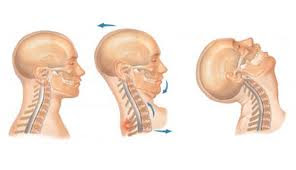Wrist pain

Definition:
Wrist pain is a common complaint. Many types of wrist pain are caused by sudden injuries that result in sprains or fractures. But wrist pain also can be caused by more long-term problems — such as repetitive stress, arthritis and carpal tunnel syndrome.
Because so many factors can lead to wrist pain, diagnosing the exact cause of long-standing wrist pain sometimes can be difficult. An accurate diagnosis is crucial, however, because proper treatment depends on the cause and severity of your wrist pain.
Symptoms:
Wrist pain may vary, depending on what's causing it. For example, osteoarthritis pain is often described as being similar to a dull toothache, while tendinitis usually causes a sharp, stabbing type of pain. The precise location of your wrist pain also can give clues to what might be causing your symptoms.
When to see a doctor
Not all wrist pain requires medical care. Minor sprains and strains, for instance, usually respond to ice, rest and over-the-counter pain medications. But if pain and swelling last longer than a few days or become worse, see your doctor. Delays in diagnosis and treatment can lead to poor healing, reduced range of motion and long-term disability.
Causes:
Your wrist is a complex joint made up of eight small bones arranged in two rows between the bones in your forearm and the bones in your hand. Tough bands of ligament connect your wrist bones to each other and to your forearm bones and hand bones. Tendons attach muscles to bone. Damage to any of the parts of your wrist can cause pain and affect your ability to use your wrist and hand.
Injuries
Treatments for wrist problems vary greatly, depending on the type, location and severity of the injury, as well as on your age and overall health.
Medications
Over-the-counter pain relievers, such as ibuprofen (Advil, Motrin, others) and acetaminophen (Tylenol, others), may help reduce wrist pain. Stronger pain relievers are available by prescription.
Therapy
If you have a broken bone in your wrist, the pieces will need to be aligned so that it can heal properly. A cast or splint can help hold the bone fragments together while they heal.
If you have sprained or strained your wrist, you may need to wear a splint to protect the injured tendon or ligament while it heals. Splints are particularly helpful with overuse injuries caused by repetitive motions.
Surgery
In some cases, surgery may be necessary. Examples include:

Definition:
Wrist pain is a common complaint. Many types of wrist pain are caused by sudden injuries that result in sprains or fractures. But wrist pain also can be caused by more long-term problems — such as repetitive stress, arthritis and carpal tunnel syndrome.
Because so many factors can lead to wrist pain, diagnosing the exact cause of long-standing wrist pain sometimes can be difficult. An accurate diagnosis is crucial, however, because proper treatment depends on the cause and severity of your wrist pain.
Symptoms:
Wrist pain may vary, depending on what's causing it. For example, osteoarthritis pain is often described as being similar to a dull toothache, while tendinitis usually causes a sharp, stabbing type of pain. The precise location of your wrist pain also can give clues to what might be causing your symptoms.
When to see a doctor
Not all wrist pain requires medical care. Minor sprains and strains, for instance, usually respond to ice, rest and over-the-counter pain medications. But if pain and swelling last longer than a few days or become worse, see your doctor. Delays in diagnosis and treatment can lead to poor healing, reduced range of motion and long-term disability.
Causes:
Your wrist is a complex joint made up of eight small bones arranged in two rows between the bones in your forearm and the bones in your hand. Tough bands of ligament connect your wrist bones to each other and to your forearm bones and hand bones. Tendons attach muscles to bone. Damage to any of the parts of your wrist can cause pain and affect your ability to use your wrist and hand.
Injuries
- Sudden impacts. Wrist injuries often occur when you fall forward onto your outstretched hand. This can cause sprains, strains and even fractures. A scaphoid fracture involves a bone on the thumb side of the wrist. This type of fracture may not show up on X-rays immediately following the injury.
- Repetitive stress. Any activity that involves repetitive wrist motion — from hitting a tennis ball or bowing a cello to driving cross-country — can inflame the tissues around joints or cause stress fractures, especially when you perform the movement for hours on end without a break. De Quervain's disease is a repetitive stress injury that causes pain at the base of the thumb.
- Osteoarthritis. In general, osteoarthritis in the wrist is uncommon, usually occurring only in people who have injured that wrist in the past. Osteoarthritis is caused by wear and tear on the cartilage that cushions the ends of your bones. Pain that occurs at the base of the thumb may be caused by osteoarthritis.
- Rheumatoid arthritis. A disorder in which the body's immune system attacks its own tissues, rheumatoid arthritis is common in the wrist. If one wrist is affected, the other one usually is, too.
- Carpal tunnel syndrome. Carpal tunnel syndrome develops when there's increased pressure on the median nerve as it passes through the carpal tunnel, a passageway in the palm side of your wrist.
- Ganglion cysts. These soft tissue cysts occur most often on the top of your wrist opposite your palm. Smaller ganglion cysts seem to cause more pain than do larger ones.
- Kienbock's disease. This disorder typically affects young adults and involves the progressive collapse of one of the small bones in the wrist. Kienbock's disease occurs when the blood supply to this bone is compromised.
Treatments for wrist problems vary greatly, depending on the type, location and severity of the injury, as well as on your age and overall health.
Medications
Over-the-counter pain relievers, such as ibuprofen (Advil, Motrin, others) and acetaminophen (Tylenol, others), may help reduce wrist pain. Stronger pain relievers are available by prescription.
Therapy
If you have a broken bone in your wrist, the pieces will need to be aligned so that it can heal properly. A cast or splint can help hold the bone fragments together while they heal.
If you have sprained or strained your wrist, you may need to wear a splint to protect the injured tendon or ligament while it heals. Splints are particularly helpful with overuse injuries caused by repetitive motions.
Surgery
In some cases, surgery may be necessary. Examples include:
- Severely broken bones. A surgeon may connect the fragments of bone together with metal hardware.
- Carpal tunnel syndrome. If your symptoms are severe, you may need to have the tunnel cut open to relieve the pressure on the nerve.
- Tendon or ligament repair. Surgery is sometimes necessary to repair tendons or ligaments that have ruptured.


























